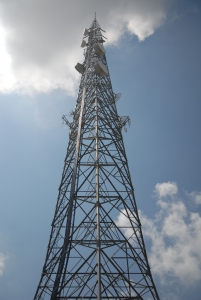Within the first 12 weeks of 2014, there were six deaths of workers performing maintenance or serving cell phone towers. Based on the number of deaths of cell tower workers in 2013 (13 employees total for the year), the rate of deaths in the industry in 2014 is nearly double the number of workers killed last year. This increase is disturbing but not entirely unexpected in light of prior estimates that show the fatality rate in the tower climbing industry is five times the rate of other industries. 
Although tower climbing work is recognized as high-risk, the significant increase in deaths in just the first three months of the year is raising questions about how safety protections can be put into place for those who work remotely. These workers may still be considered employees and eligible to make workers’ compensation claims with the help of a workplace accident lawyer, but the workers do not go to a central worksite where an employer can actively take steps to improve conditions and enforce safety rules in order to reduce fatalities on the job.
Safety Issues for Remote Workers
Safety News Alert indicates that the high rate of death for tower climbers may be largely explained by the fact that many workers engage in “free climbing.” Those who free climb towers fail to use appropriate fall protection measures when they are ascending. Fall protection measures are required by the Occupational Safety and Health Administration (OSHA) but these workers are alone in the field away from colleagues and supervisors and there is no one present to make sure that they use the proper safety gear.
Questions of how to keep remote workers safe are becoming more important than ever, with autonomous workers accounting for even larger percentages of the U.S. workforce. Workers in many fields do high-risk jobs remotely off-site including those who service and repair utilities; as well as construction workers; truck drivers; and agricultural and forestry workers.
Previous evidence has indicated that lone workers tend to be both more self-motivated and more-self regulated. Command and control, therefore, may be the wrong way to try to improve safety and encourage these autonomous employees to follow OSHA guidelines. Instead, it may be better to help encourage the workers to become more self-motivated to take active steps to protect their own health and safety.
Employers should establish company procedures and policies that stress safety over speed, and that encourage workers to pause before beginning work to consider hazards and to think about the best ways to avoid the risks. Ultimately, it will be up to each employee to follow the recommendations but employers who foster a workplace culture where safety is seen as the first priority can encourage remote workers to protect themselves and hopefully bring the death toll down.
Call Jeffrey Glassman Injury Lawyers for a free and confidential appointment — (617) 777-7777.
More Blog Entries
Travelers Insurance Identifies Common Injuries, March 3, 2014.
 Massachusetts Workers Compensation Lawyers Blog
Massachusetts Workers Compensation Lawyers Blog

